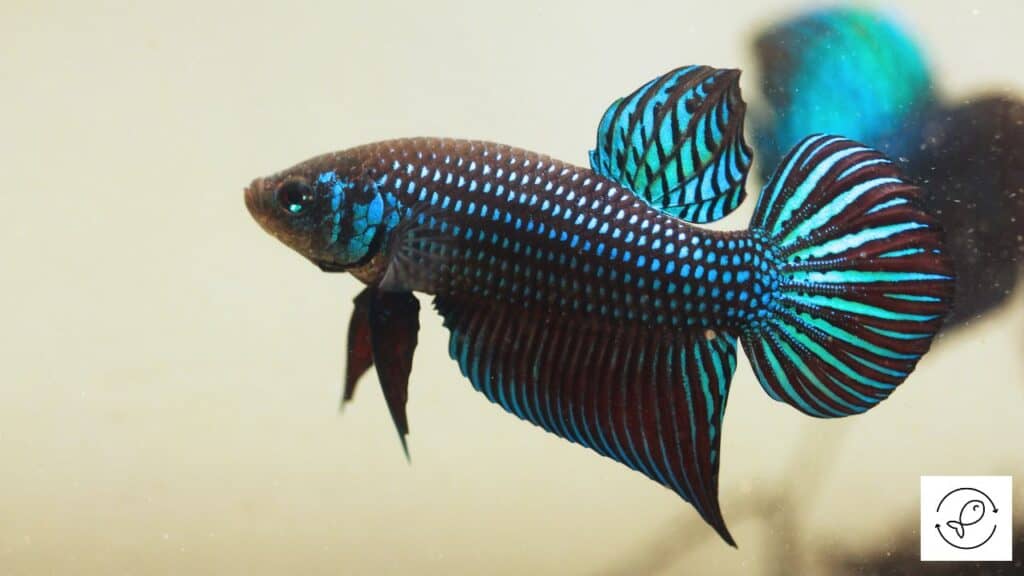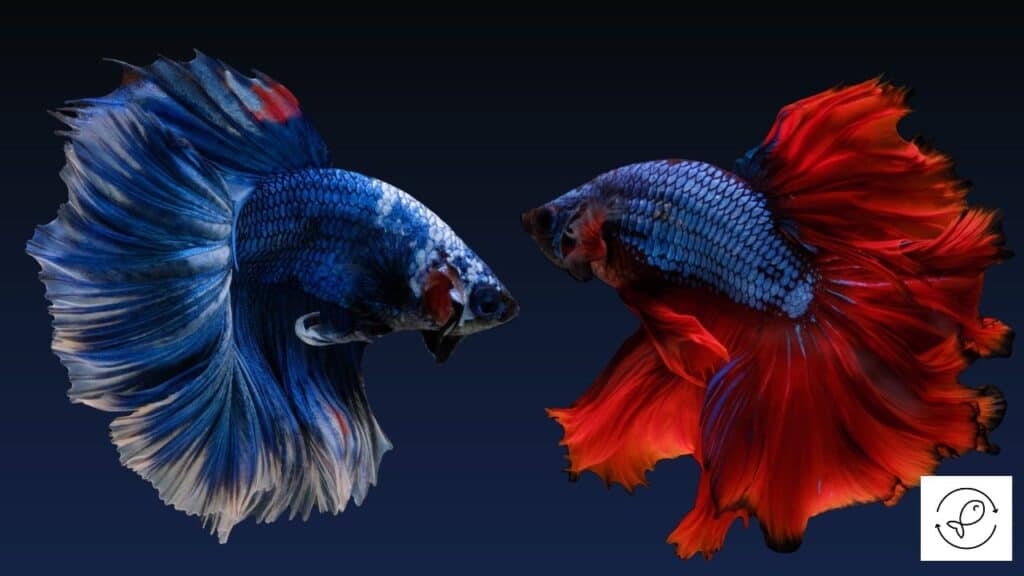Bettas are highly territorial, and male bettas display aggression toward the intruding female betta fish.
So how do bettas mate?
How Do Bettas Mate in The Wild?
In the wild, bettas engage in courtship to mate.
Male Bettas may become very aggressive when they are ready to mate.
If the female isn’t interested, the male may display aggression by nipping or chasing her.
Female bettas are less hostile than males but can also display aggression.
They convey their emotions to one another by flaring their fins and swaying their tail.
When a male seeks to mate with a female, he will construct a bubble nest before launching into courtship activities.
The male will circle the female once he has attracted her attention.
Subsequently, the female betta will deposit her eggs for the male to fertilize them.
How Do Bettas Mate in An Aquarium?
When a male betta is ready to mate, he will build a bubble nest and perform a courtship dance for the female.
Once the female betta has accepted his advances, she will lay her eggs which the male will fertilize.
The male betta will start by gathering and placing the eggs in the nest.
The female betta will assist the male in putting all the eggs in the nest.
Once the female betta has finished releasing the eggs and they are placed in the bubble nest, carefully remove the female from the spawning tank and put her back into her original tank.
After the eggs are safely in their nest, the male will protect them for 24 to 36 hours by adding more bubbles.
Sometimes, the male betta can construct another nest away from the original one and move the eggs there.
You may often see the male betta consuming eggs or fry as he gets rid of the infertile eggs or sick and deformed fry.
As soon as the eggs hatch, the fry will start to squirm to free themselves from the eggs and will usually fall out of the nest.
The male betta will pick up the fry and return them to their nest.
During the initial days after hatching, the betta fry will remain in a tail-down posture before transitioning into a horizontal swimming stance.
When the fry begin to swim freely, it’s time to remove the male betta from the spawning tank.
You can feed the newborn bettas with infusoria and ready-made commercial food.
When they get older, feed them baby brine shrimp, vinegar eels, and micro worms to provide them with adequate nutrition.
How to Create the Perfect Mating Conditions for Bettas in Your Aquarium?
Although you can house male and female bettas in the same tank, it’s generally best to separate them if breeding is the goal.
To attempt breeding, allow the bettas to adjust to their respective tanks for at least a month before you start the breeding process.
During this time, watch for any health issues and behavior changes.
Given below are tips on how to create mating conditions for bettas in your home aquarium:
Have a Separate Spawning Tank
It’s a common mistake to breed the bettas in the male betta’s tank.
Betta fry are fragile and need highly-maintained water to thrive in captivity.
Once the young ones can swim, the male betta may consider them a threat.
So you should create a specific spawning tank for breeding the bettas and remove the male betta fish from it once the young fry can survive independently.
Place Aquatic Plants
Placing aquatic plants in the spawning tank is a great way to provide hiding places for the fry.
The female betta will also appreciate having some vegetation to hide while laying her eggs.
You can also use floating plants or clumps of Christmas moss since they are easy to maintain and provide plenty of cover for the fry.
Putting Indian almond leaves into the water can also help soften the water while providing male bettas an area to create the bubble nest.
Provide Protein-Rich Diet
To breed your bettas, you must ensure that they remain healthy.
The best way to provide the required nutrition is by feeding them live food such as:
- Bloodworms,
- Cricket,
- Live brine shrimp, and
- Roaches.
In the absence of live food, frozen or freeze-dried brine shrimp and bloodworms can be used as an alternate.
Aim to feed the live food daily for about a week before putting the bettas in the spawning tank.
Place a Divider Inside the Tank
While introducing the breeding pair into the spawning tank, keep the male and female bettas separate by placing a divider in the tank.
Bettas are highly territorial, and the male will defend its territory against the intruding female.
A divider can help to keep them separate and give you time to observe their behavior.
Allow the female betta to become familiar with her new environment before bringing in the male.
The key to successful breeding bettas is ensuring that both fish feel comfortable.
Set Adequate Water Temperature

Set the water temperature between 76°F and 82°F.
It will help stimulate the reproductive behavior of bettas and begin the mating process.
A water heater can help to keep the temperature within the desired range.
Observe the Behavior of The Breeding Pair
The breeding pair must be able to see and observe each other before starting the mating process.
So, place the pair next to each other by dividing the tank into two with a divider.
Allow them to observe each other for a few days, and keep observing their behavior.
Once the female betta is ready, a small white egg tube will appear behind her ventral fin.
Vertical stripes will also appear on her body.
On the other hand, the male betta will start flaring its fins and build a nest indicating his readiness to mate.
Remove the Divider
Once the male builds a bubble nest, remove the divider from the tank and allow the female betta to move into the male’s side of the tank.
However, it’s necessary to keep an eye on them. The male betta may intimidate the female by biting her fins or chasing her.
This behavior is acceptable and can last for some time or even days unless their safety isn’t compromised.
Ensure that there are plenty of hiding places for the female betta to escape bullying. Also, look out for any severe injuries.

